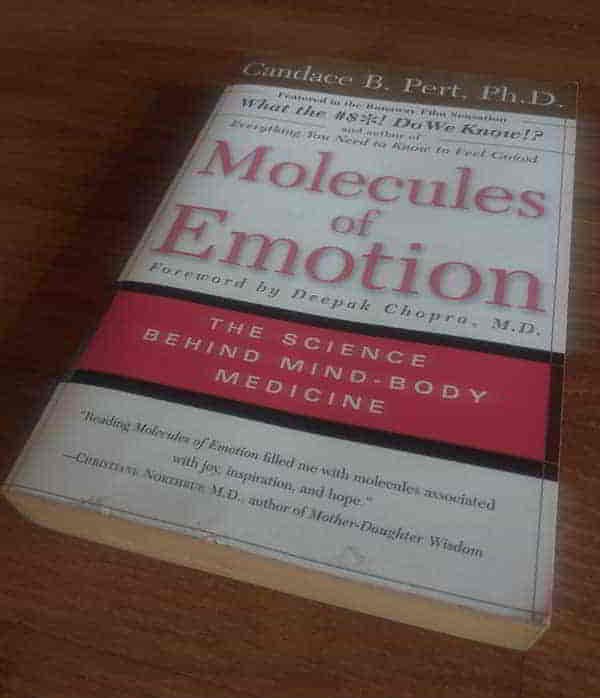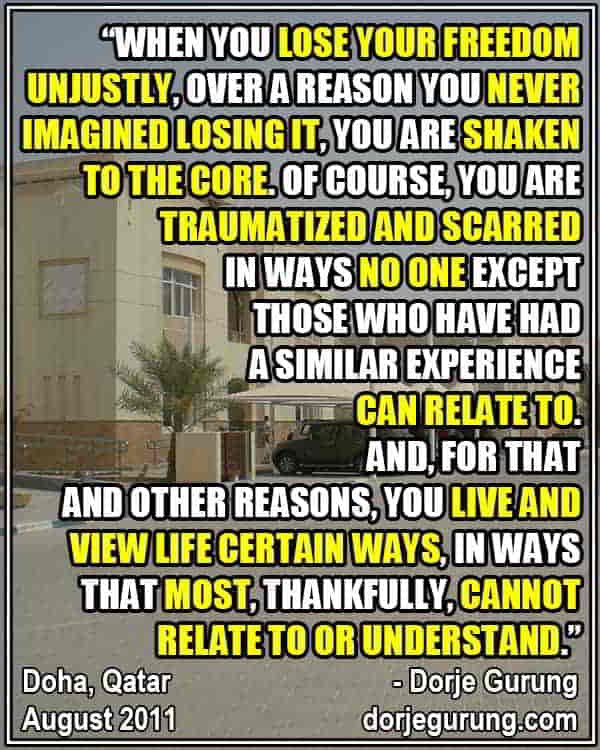
I read Molecules of Emotion by Candace B. Pert not long after I got it in the spring of 2009, when I was living and working in Baku, Azerbaijan. The most important lesson I took from the book was simple yet profound: we can change and transform our lives, even when we are struggling or suffering, by changing the way we think and feel.
The central argument is that when I change my thoughts and emotions, I acquire a different perspective on the things and events that happen to me and around me, as well as on my relationships. Consequently, I experience them differently. Pert posits that the practical path to shifting my thoughts and feelings is to do different things from what I normally does and to do things differently from how I am used to doing them.
The underlying mechanism is this: In order to get out of a slump, to recover from depression and self-defeating thought patterns, such as hopelessness, brought on by past trauma, one must change one’s behavior patterns. One must do different things and do things differently in order to think differently and feel differently. This is one of the main reasons why one has to break patterns of thought that keep you locked in the same mental and emotional states. However, learning this insight is one thing; applying it to my own life is, to be sure, quite another.
The Unintentional Transformation
In my case, what happened following the gross injustice I suffered from—my unjust time in police custody in Doha, Qatar—was that, unbeknownst to me for quite some time, I had already changed in many important ways.

One of the most profound, if painful, things that happens following a traumatic experience is that your life is no longer the same. I no longer looked at and interpreted the world or my relationships the same way I did before the incident. I found myself questioning and re-evaluating everything, including some of my core beliefs and values. This process meant wrestling with myself—and for a long time, I struggled to accept and come to terms with who and what I had become.
Consequently, I began to view life—both my own specifically and life in general—differently. In time, I recognized that a lot of things had changed and were continually changing—even my relationships with people—and I began to LIVE life very differently from both my past self and many people around me.
It just took me quite a while to accept and embrace that shift. One reason, I am pretty sure, is the fact that I had next to no one in Nepal who provided any significant emotional and social support to help me wrestle with and navigate through the emotional and intellectual turmoil. The traumatic Qatar ordeal and how it changed and affected me—I was dealing with it entirely alone. I realized, with painful clarity, that I had had NO ONE in Kathmandu helping or assisting with my recovery. Worse, I had people severing ties with me and distancing themselves.
The Deliberate Path to Recovery
Regardless, I eventually recognized that overcoming the many internal and external struggles required that I rebuild or reconstitute myself anew, and that required me to do things differently and do different things—I had to live differently. I reasoned that by doing so, I would open myself up for that which I had been ignoring or suppressing, and in the process, truly transform, as per the lessons I had learned from Molecules of Emotion.
For quite some time following my return, I continued to engage in public-facing and “worthy” causes. I was co-directing a non-profit organization supporting government (public) schools in Kathmandu and rural Sindhupalchok, where we built or stocked libraries in schools, ran scholarship programs for students, and set up Social Businesses. Following the megaquakes of 2015, we were also involved in reconstruction.
Beyond the NGO work, I was also deeply involved in activism: this included social justice issues (notably gender and caste-related rights issues) and the issues and plights of migrant workers. I was constantly writing and speaking at schools and on public platforms about education, the caste system, and social justice. Furthermore, I volunteered for the United World College National Committee as a member of the Selection Committee, even raising funds to cover the expenses of the scholars.
Yet, after a lifetime of putting others first, I realized this pattern was part of the problem I was facing. I felt a crucial, personal need to change that. While I had rarely ever sought to be the central character even while engaging in all those activities, I realized I had to focus on what I needed and wanted—not in a selfish “me, me, me first” way, but in a necessary way. I had to consciously refocus my attention on my own self and my needs, suffering as I was from disillusion, depression, disconnection.
Luckily, in addition to the professional work and activism, I also engaged in activities that, in a way, fed my soul. Not surprisingly, these involved travel. In the fall of 2013, I went on a long trek around Annapurna Sanctuary in Nepal. From April to June in 2014, I traveled to the United States on the invitation of my alma mater, Grinnell College. In 2015 and January 2017, I again travelled to the United States. In 2019, in the Fall, I travelled to India and in the Winter to Eastern Nepal. And finally, in the beginning of 2020, I travelled to Western Nepal.
Choosing Solitude
Following my thirteen-month visit to North America from April 2015 to April 2016, I realized that I desperately needed to prioritize my recovery. I needed to allow myself time—or, perhaps, force myself—to think and feel differently. From then on, I began taking all kinds of DELIBERATE steps to drastically reduce the things and people to whom I devoted my time, effort, and energy.
One of the most important steps I took was a social retreat. I let go of people in Nepal who had distanced themselves from me, including friends who felt I needed to apologize for a blog post I wrote about my personal experience of ethnicity- or caste-based discrimination.
This extended retreat included concrete actions rooted in the need for self-preservation:
- January 2018: Culling Facebook friends and making my posts visible only to friends. This was a step toward fulfilling a need for a safe and comfortable online environment where I knew I wouldn’t be judged or anger people—an emotional toll I’d already had way more than enough of.
- September 2018: Drastically cutting down on the use of Twitter.
- June 2018: Quitting my job and quitting volunteering for UWC Nepal (disengaging from organizational “we” efforts).
- March to December 2019: Taking an eight-month break from blogging and writing.
I also changed a deeply ingrained coping mechanism. For a long time, dreading the walk home and dreading going to bed, I would stay out late alone, drinking and dancing, well past midnight. This was a direct attempt to avoid having to face the morning, when I would wake up early but struggle greatly to get out of bed, or to avoid those recurring wishes that I would either not wake up at all or wake up in a new place. My reluctance to go to bed was so strong that even while inebriated, I would be on social media, making posts or comments, many I am now embarrassed by. I put a stop to all that, too.
One of the most important realizations I came to during this period of intentional withdrawal was that I didn’t have a single person in Nepal whom I could really trust, and that I had to CHOOSE to be alone and go it alone. For a long time, I resisted that. But once I accepted it—accepted that I was alone, that I was going to have to go it alone, and that that’s okay—I started feeling better. I was finally comfortable choosing to “isolate” myself just before March 2020. The lockdown that started in the second half of that month, it turned out, was a blessing for me. Doing, thinking, and feeling are all intimately connected and, therefore, influence and shape one another. All three are looped together and, in a way, are a feedback mechanism for one another.
During the coronavirus pandemic, in September 2021, eight years later, I finally felt that I was on the path to recovery.
While still in police custody, which had started with about an eighteen-hour stint in isolation in a private cell, had someone told me that some years down the roaf I would later CHOOSE to “isolate” myself, I would have told them they were crazy! Of course, at the time, I had no idea how the experience would change and shape me. Regardless, I decided change is what I needed, and I began introducing changes to my life—mainly dropping things I used to do and doing things differently.
A Note for Supporters
If someone you love and care about is recovering from trauma and you notice signs of them potentially transforming, you must recognize that nothing is wrong with her or him. More importantly, provide support by empathizing with—and affirming—their transformation. The best thing you can do is offer the necessary emotional support to help them navigate that change. And the best way to provide emotional support is to reach out, regularly, and when the person talks or shares, to listen, non-judgmentally.
What do you think?
PS. I got help from AI with polishing up this blog post.


Dorje, thank you for sharing your experience. It is not very many people who are able to be vulnerable. Life is beautiful and each step should be closer to nirvana.
Hey Jeremy,
You are welcome and thank you for your kind words. Life indeed is amazing … as is the world we live in.